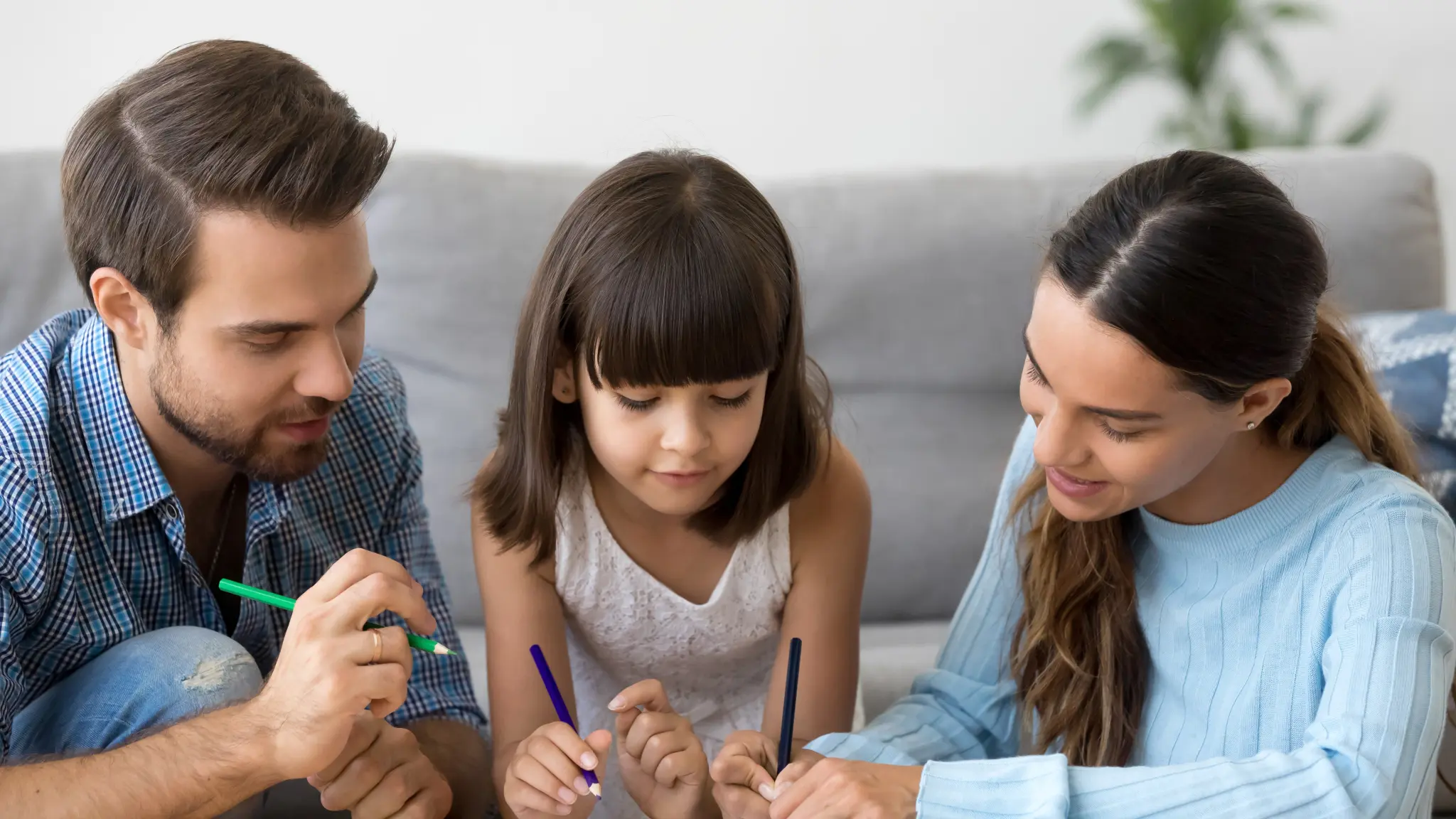How old is your child?
What kind of motor activities do you engage your little one in?
Do you know that good eye-hand coordination is essential for good writing skills?
By the time a child is about 2 years old, they have already learnt to attempt holding things with their hands, while playing with things like toys or objects around the house. Initially it may be larger objects, and then slowly they develop the capacity to hold slimmer and smaller objects.
As your child is ready to go to play school and then kindergarten, it is time to help them get comfortable getting a good grip on the pencil, so that they will write better and not strain their hands or wrists.
Observe their natural tendencies:
Before teaching them, observe your children’s natural tendencies while writing, drawing or scribbling.
Do they use their right hand or left?
Do they switch between either hand?
Are they able to effortlessly use both hands
Never insist on a child using only the right hand, or only one hand. It is their innate skill, and must not be restrained in any way. Children who can write, eat or work with either hand, or use both simultaneously are ambidextrous and always likely to be more intelligent and gifted.
Start with some colours and plenty of freedom:
Give your child an assortment of colour pencils, crayons and felt tip pens, along with blank papers. Let them unleash their creativity on it, uninhibitedly. As they enjoy dots, lines, curves and scribbles, they will associate stationery with joy.
Whether they colouring inside the lines or outside, should be from their imagination. Allow them to draw whatever they associate with. If a cat is purple and a dog is silver, that’s welcome. Leave them to do as they please, without too many instructions. The more they get bored, the more they will innovate while at play.
Keep complimenting them on their efforts, and appreciating their art. This is an age where they should be taught to believe in themselves.
Show them how:
A simple and easy technique while initiating your child into writing, is to show them how to grip the pencil or pen while writing. They learn by observing.
If a child is too young, use an object resembling a pencil, but ensure it does not have sharp edges.
Hold their hand while practising:
Once a child is going to learn writing the alphabet in school, start practising by holding their hand as they attempt to write.
They might falter or grip it too tight or too loose. Gently show them the correct way.
Start with simple shapes:
Draw some basic shapes on a blank page, and ask your child to copy it, while asking them what it resembles. Circles, lines, diagonals, curved lines are easy to replicate, and associating them with real objects will help them remember.
Different types of grip:
Every child will eventually grip the pen/pencil differently.
1. Tripod grip:
In this style, a person holds the pencil between the thumb and the index finger, and the writing instrument rests on the middle finger. This is one of the most common methods of holding a pen/pencil while writing.
2. Quadrupod Grip:
In this style, a person holds the pen/pencil between the thumb and the index finger+middle finger, while resting it on the ring finger.
Common challenges while learning:
In the initial months, a child is likely to struggle with finding the ideal way to grip the pencil while writing. Some common hiccups are:
- Gripping the pencil too tightly or too loose.
- Holding the pencil with the whole hand.
- Placing the thumb beneath the index finger.
- Holding the pencil perpendicular, instead of at an angle.
- Difficulty holding a longer pencil.
- Bending the wrist inwards, while writing
All of these can be corrected with mild reminders, and asking them to ensure that their hand and wrist are at ease.
It is a process, and you are definitely going to see an improvement over time.
Cursive Writing Books:
As children grow older, you can refine their handwriting skills by allowing them to practice in cursive writing books.
A person’s handwriting reflects their personality and traits, as they grow older and therefore, a good, clear handwriting should be encouraged over time.
Each child is unique, beautiful and intelligent in their own way. As parents, you are doing a wonderful job and so is your child. The best thing you can do for your children is to appreciate their smallest efforts, encourage them when they fall, and instil in them the lifelong values of love, kindness, compassion and mindfulness.



